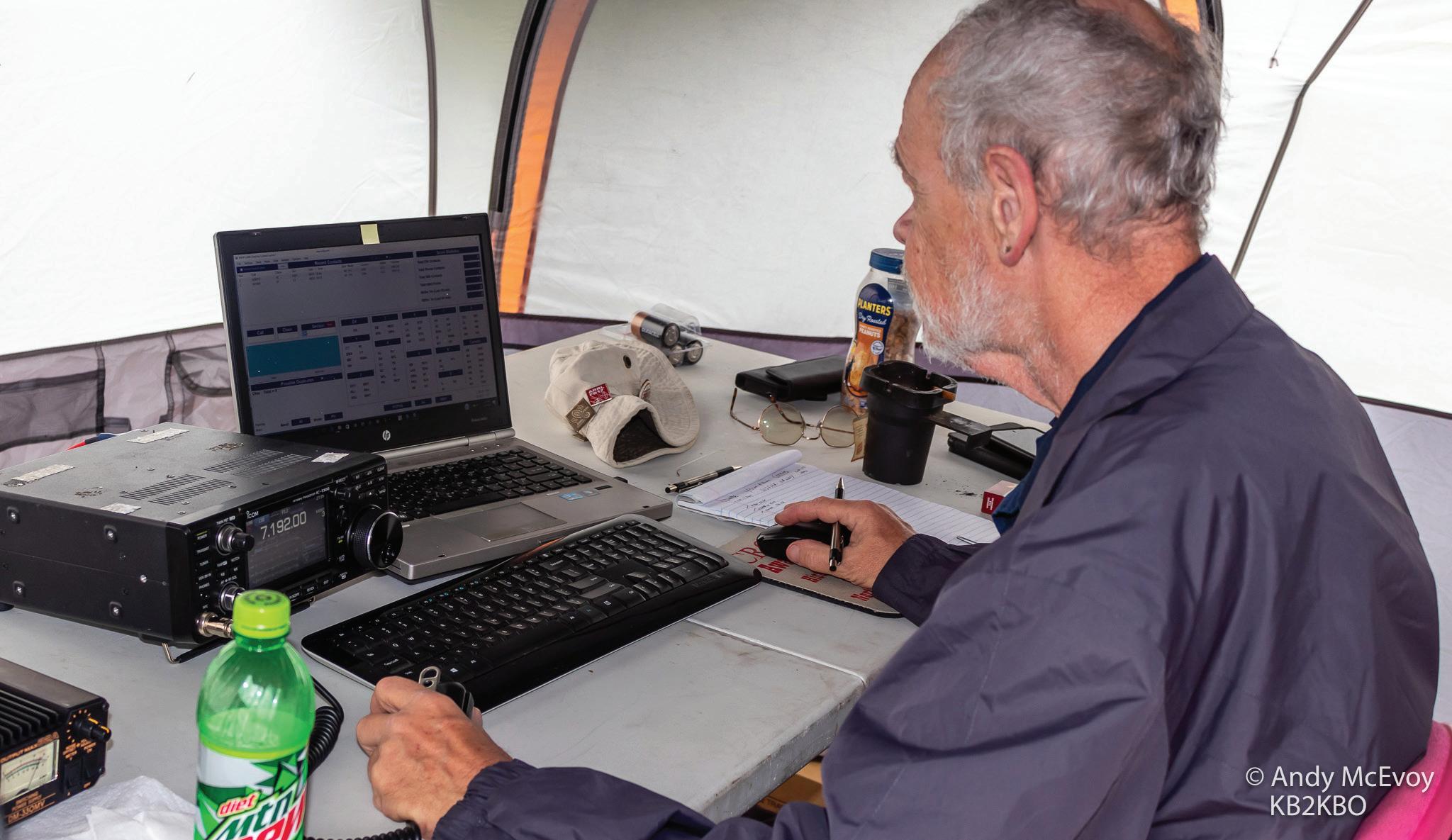
2 minute read
Where I Wander - Rubythroated Hummingbirds
Story By Joan Herrmann
Whereiwander… every spring, about the first week of May, I can expect to hear a familiar whir of wings and chipping sounds, to make me aware that this territory is being reclaimed, and where did you put our feeders.
Advertisement
The male Ruby-throated Hummingbird (Archilochus colubris) has returned.
Ruby-throated is our only eastern hummingbird. The other seventeen species of hummingbirds that can be found in North America, reside west of the Mississippi River. The males will arrive in our area a few days prior to the females’ arrival. The migrating hummingbirds will have journeyed nonstop over the Gulf of Mexico, a distance of about five hundred miles. Before starting their journey, they will double their body weight in fat and live off their body fat while flying over the water. Migrating from Central America across the Gulf waters will take them about twenty hours, but they still have a long, long way to travel.
Ruby-throated hummingbirds have a phenomenal metabolic rate that is higher than any other animal. Their heart rate is about one thousand two hundred and sixty beats per minute, and their breathing rate is about two hundred and fifty breaths per minute, even while resting. Scientists have learned that during flight, the hummingbird consumes ten times more oxygen than human “elite athletes.” Their wings can beat fifty-three times per second as they hover and feed. In addition to flying forward, they can also fly backward and upside down. The male’s aerial mating display includes flying back and forth like a pendulum in front of the female until she is accepting, and then they will mate.
Males are polygamous and will mate with more than one female. Males take no responsibility in nest making, incubating, or caring for the nestlings. The female is the architect designing the lichencovered nest, laying two or occasionally three eggs, and perhaps reusing the same nest for a second brooding in the same season. The cup-shaped nest is about one inch in width and depth. She assembles it with plant materials and spider webs and covers the outside with greenish-gray lichen. The silky spider webs allow for the expansion of the nest as the nestlings grow within it. She will line the inside of the nest with dandelion or colt’s foot downy seed fluff. The female will most often nest in a mixed deciduous and coniferous forest. The nesting trees of choice are usually six to fifty feet tall, with ten to twenty feet being the average height. She attaches the nest to a small twig or small branch that slants downward from the tree, is sheltered above by leafy branches, and has an open area below the nesting site. The female will take about seven or eight days to complete her nest.
The eggs which she lays are glossy white and about the size of a white bean. She will incubate the eggs for approximately fourteen to sixteen days. The nestlings are born altricial, which means they are immobile, downless, with closed eyes, and need to be fed. For the first few days, shortly after being fed, the nestlings will expel a fecal sac after eating. The female will remove the fecal sac preventing the nest from being contaminated with
RADIO From Page 16
Herkimer, Montgomery, Fulton, Schoharie, Chenango, Otsego, Oneida, and Madison
Counties.
Anyone interested in the FHARA can attend a meeting or call
Educational Committee
Chairman Chris Bouck
KB4CMF at 1-315-4293927 or Association



President Don Peterson
KD2ILO at 1-315-8683283 for more information. More info can be found at www.fhara.net.
We








